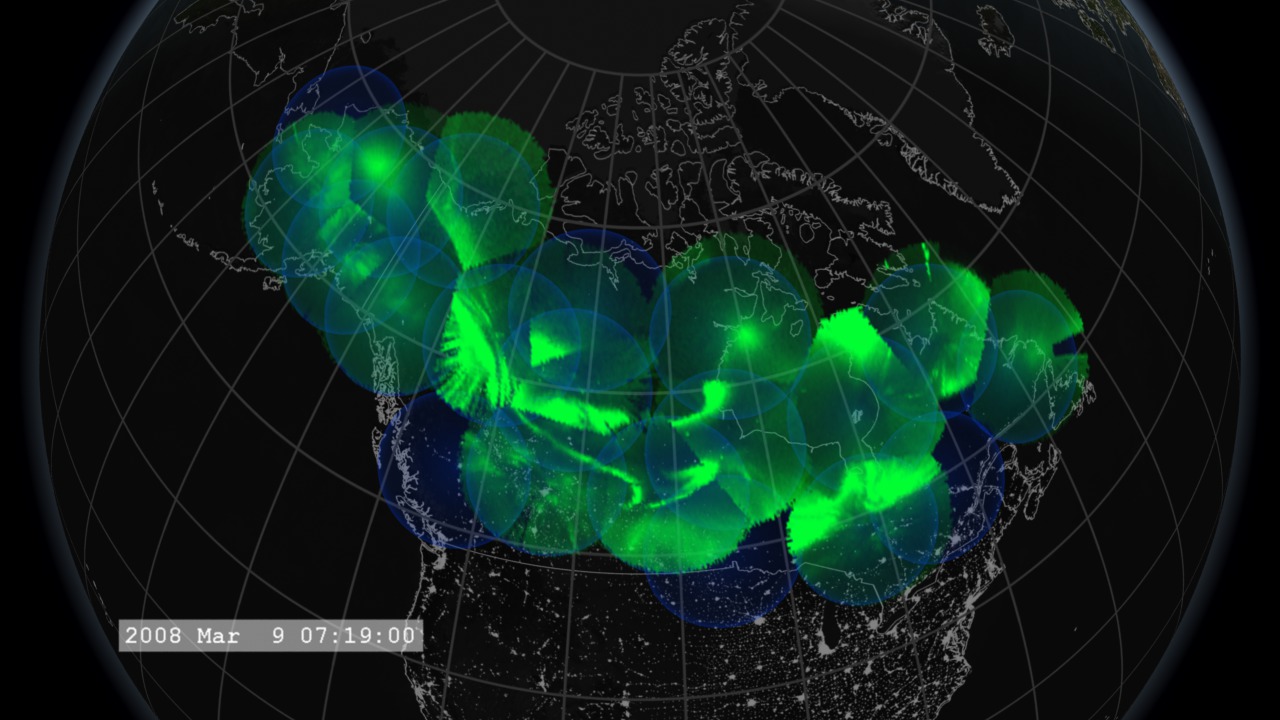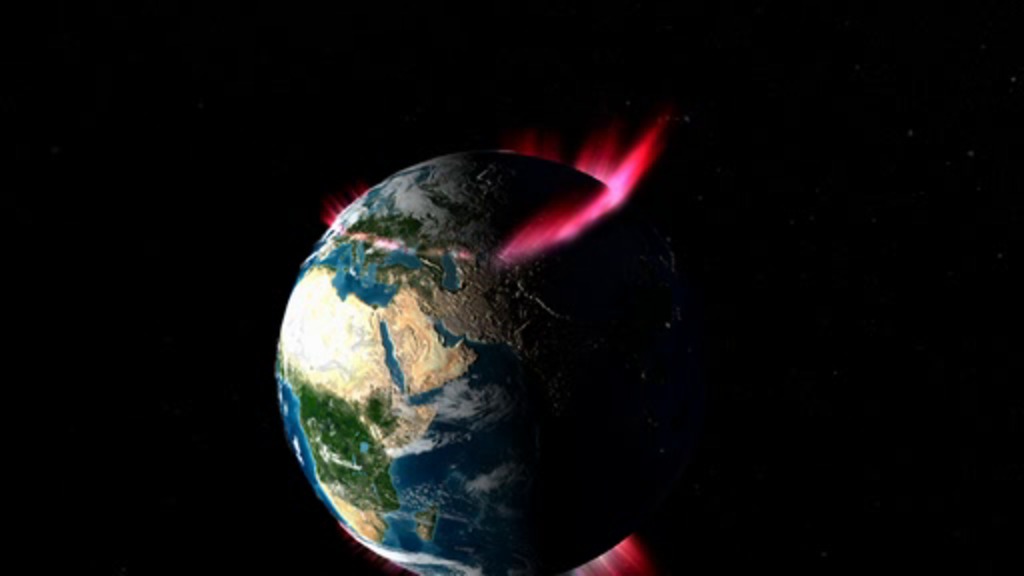Why Auroras Erupt
Why does the aurora borealis—the typically steady green bands of light common in the nighttime sky over the Arctic—occasionally erupt in bouts of activity that leave the sky shimmering with a full palette of reds, whites and purples? Scientists have long known that disturbances in Earth's magnetic field driven by the solar wind can trigger such auroral eruptions, but it hasn't been clear whether the disturbances originate near the Earth or at more distant points closer to the moon. In recent years, a series of five satellites and a network of ground-based instruments in the Arctic have finally helped provide an answer. Hermetically-sealed cameras, called All Sky Imagers, placed strategically throughout the American and Canadian Arctic, look upward to observe nearly the entire arc of the sky where auroras occur. The ground network, considered the sixth "satellite" of NASA's aurora-monitoring THEMIS mission, takes auroral snapshots each three-seconds all night long, every night. In 2008, it helped make a breakthrough discovery: the magnetic disturbances that cause auroras to erupt begin about a third of the way to the moon when stressed magnetic lines reconnect and send massive bursts of energy toward Earth. The visualization below shows the first major aurora eruption that the imagers observed.

Why do some auroras shimmer and dance with vibrant colors?
Overlapping fields of view from ground-based sky imagers piece together erupting aurora during a night in February 2008.

Most auroras, such as this arc of light observed in Alaska, glow with a greenish color.

Occasionally auroras burst into a full suite of red, purple, and yellow tones.

The circles show the portion of the sky each instrument can monitor, as well as the portion of the atmosphere visible from any one location.

The cameras require dark areas free of obstructions, but as seen by streaks in the seventh circle to the left, sometimes trees get in the way.
THEMIS satellites and ground sensors helped prove solar wind merging with magnetic field lines can spur colorful eruptions.
Credits
Please give credit for this item to:
NASA's Goddard Space Flight Center
-
Animators
- Tom Bridgman (Global Science and Technology, Inc.)
-
Greg Shirah
(NASA/GSFC)
- Walt Feimer (HTSI)
-
Producer
- Rani Gran (NASA/GSFC)
-
Scientists
- Vassilis Angelopoulos (University of California at Berkeley)
- David G. Sibeck (NASA/GSFC)
- Harald Frey (University of California at Berkeley)
- Nicola Fox (Johns Hopkins University/APL)
-
Writer
- Adam P. Voiland (Sigma Space Corporation)
Release date
This page was originally published on Tuesday, August 30, 2011.
This page was last updated on Wednesday, May 3, 2023 at 1:53 PM EDT.

